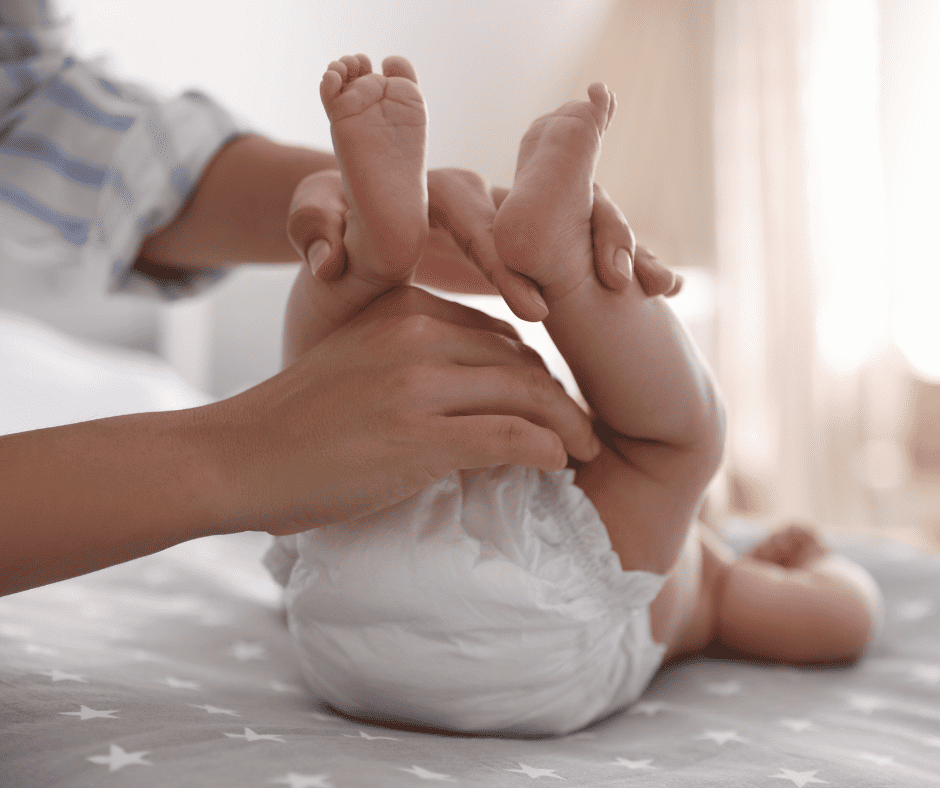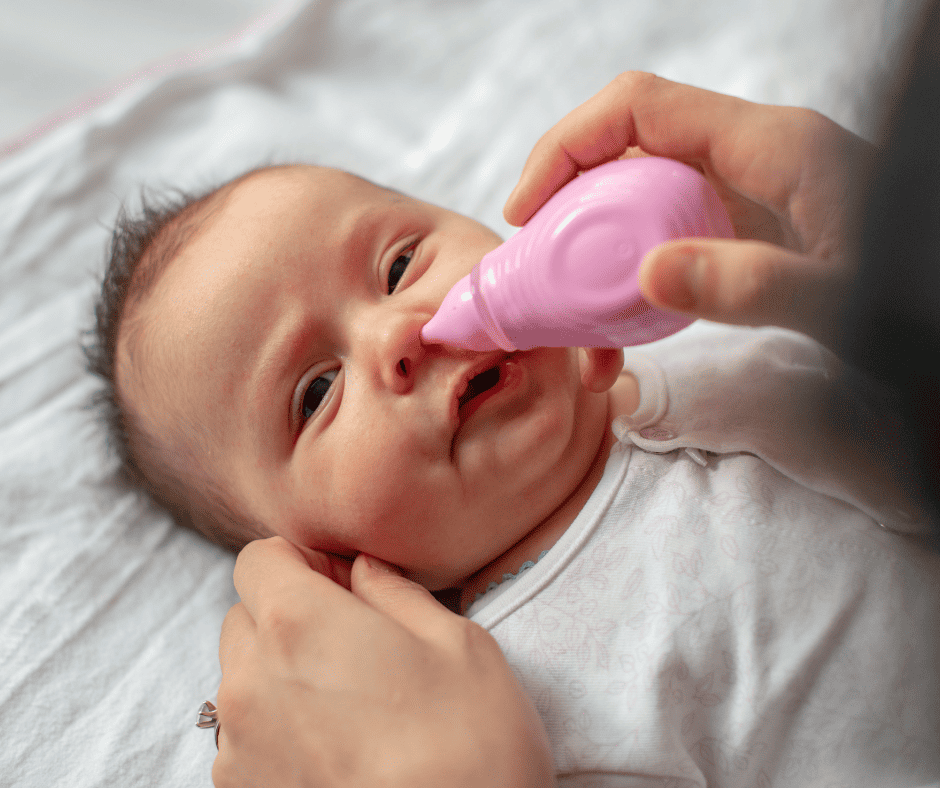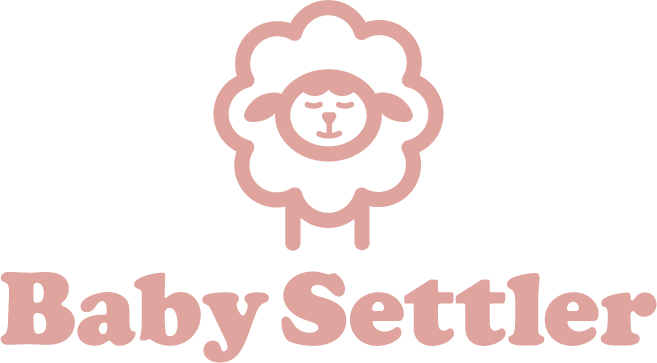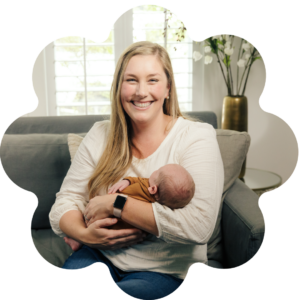Coming close to the end of your pregnancy and being on the cusp of parenthood can be a daunting time. You may be feeling excited to welcome your newborn as well as a tad apprehensive and even scared. This is totally normal! When it comes to what to expect as a first-time mom, holding, diaper changes, swaddling, feeds, and sleep are some of the things to brush up on before your due date.
Having an idea of what to expect and what to do can lay some anxieties to rest. Here are our newborn care tips for new parents:
How Do You Hold A Newborn?
The biggest rule for holding a newborn baby is to always protect the airway and support the head. Newborns have no core or neck strength. For example, I like to have their chin resting in my hand and have my other hand on their bottom – I can move in this way because I’m protecting their airway and their head. You don’t want their head to move back and forth. When you’re picking them up and when you’re holding them, always think about supporting their head.
Healthline adds, “Pay attention to baby’s mood while you’re holding them. If they’re fussy or crying, you might try another position to see if that makes them more comfortable. You can also try a gentle and slow rocking. Take note that baby’s head should always be turned out to allow them to breathe.”

How Often Should You Change A Newborn’s Diaper?
Newborns need to have their diapers changed up to 12 times a day, or every two to three hours. “Babies have very delicate skin so their nappy needs to be changed as soon as they wet or poo themselves, otherwise their skin becomes sore and red,” says the NHS.
When changing their diaper, you always want to make sure to pull out the flaps on the diaper. Then, for little boys, you’re going to point their penis down. Many times parents will be like, “I have no idea, they’re spilling out of their diaper, it’s a terrible diaper.” Really what’s happening is you’re not pointing down his penis, then he is basically going to pee out of his diaper.
It’s also important to allow their umbilical cord to breathe. While once it was advised to rub the umbilical cord stump with alcohol, Mayo Clinic explains, “Researchers now say this might kill bacteria that can help the cord dry and separate. Instead, expose the stump to air to help dry out the base. Keep the front of your baby’s diaper folded down to avoid covering the stump.”

Should Newborns Be Swaddled?
Yes! Swaddling can help calm your newborn and help them sleep as it reminds them of being in the womb. Wrapping your little one up can also help prevent the startle reflex. “Swaddling helps prevent your baby from flailing those little arms and legs, which can trigger her startle reflex and potentially cause her to wake up,” says What To Expect.
Babies do not like to sleep with their arms down to the side; they like to sleep with their arms midline. Whatever swaddle you use, make sure that it gives them the opportunity to have their arms midline.
Also, do not wrap your baby up too tightly – it’s important that they can still move their legs a bit. “Swaddling a baby so tightly that the hips cannot move increases the incidence of hip dysplasia, a condition where the top of the thigh bone is not seated well in the socket of the hip. Whatever swaddle is used, it is very important that the hips are able [to] move in all directions to promote healthy hip joint development,” tells University Hospitals.
Once your baby starts showing signs of rolling over, it’s time to retire the swaddle.

How Much Do You Feed A Newborn?
Baby feeding guides dictate that newborns eat every two to three hours, or eight to 12 times every 24 hours.
If breastfeeding, I highly recommend working with a lactation consultant. A lactation consultant can help you navigate any challenges that may arise during breastfeeding, as well as assist you with proper latch and positioning. Nailing the latch as soon as possible will create a smoother breastfeeding journey.
At the very least, consider infant care classes or online new parent classes before you deliver. Baby Settler offers new parent courses such as Babies Made Simple. Through this online infant care classes bundle, you’ll learn how to manage inconsistent nighttime wakings, help your newborn sleep at night, drop nighttime feeds, and more.
For bottle feeding, you’ll want to practice paced bottle feeding because it, “…simulates the natural flow of nursing but can reduce gas and overfeeding in babies,” explains Parents. This is applicable to whether you are planning on breastfeeding or if you’re just planning on going straight to the bottle.
Essentially you’re holding the bottle so that the baby is having to pull the milk out. Find my guide on how to do a paced bottle feed here.

How Long Should Newborns Sleep?
Babies sleep a lot! They can sleep up to 16 hours in a 24 hour period. “For the first two months of your baby’s life, sleep will come in many short bursts between feedings. Your baby will sleep for about 30 minutes to three hours at a time. They’ll wake up for about two hours before going back to sleep. Newborns wake up a lot because their tummies are tiny, and they get hungry not long after feeding,” explains Cleveland Clinic.
You want to create a safe sleep environment. This can look different for every parent, depending on what your parenting philosophy is and whether you are going to co-sleep or have your baby sleep in their own crib or bassinet. One of the key aspects of safe newborn sleep is reducing the risk of SIDS (sudden infant death syndrome). March Of Dimes highlights ways to make newborn sleep safer:
- Put your baby down to sleep on their back in a crib or bassinet.
- Remove hanging window cords or electrical wires near where your baby sleeps.
- Keep the room at a comfortable temperature.
- Make sure your baby’s bassinet or crib meets current safety standards.
It’s really important that you understand infant sleep cues and you know how to get your baby to sleep using the five S’s:
- Swinging. You can slowly rock your little one in your arms, but if they’re crying a lot you can pick up the pace. Never shake your baby as this can lead to brain damage.
- Shushing. This can help transport your baby back to the safe space of the womb.
- Side-lying position. You can lay your baby across your forearm with your hand supporting their head, and then place them on their back for sleep.
- Sucking. Sucking on a pacifier can relax your newborn for sleep.
- Swaddling.
Even though your newborn will be sleeping a lot, it’s still important to be intentional with their wake windows. Even new babies can be introduced to toys! At Baby Settler, we recommend Lovevery play kits.
What Are The Milestones For A Newborn?
I think it’s a really good idea to learn about newborn developmental milestones while you’re pregnant. This can help you set realistic expectations for your baby related to sleep and feeding.
If you find yourself postpartum and looking for answers about your baby’s milestones, a pediatric physical therapist is going to be a great resource for you. There are lots of pediatric physical therapy therapists on social media and YouTube that are really giving out that information.
If you have any concerns that your child is not meeting the developmental milestones that they should, early intervention is key. So don’t let someone blow you off if you have concerns!

What Are Some Safety Concerns With A Newborn?
Infant CPR is a must-do. Many infant parenting classes will cover this. (Here’s an instruction video from WebMD.)
In the early newborn days, babies can sometimes choke on spit up. If you have a C-section, sometimes they have a lot of extra fluid in their lungs, and they bring it up over the next couple of days. Knowing how to react in that situation is helpful. Your nurses in the hospital or at the birth center can give you instructions on what to do.
I highly recommend keeping a bulb suction with you in those first five to seven days.
How To Use A Bulb Suction:
Squeeze the bulb section before you put it in your baby’s mouth or nose. If you are going to go into their nose, you want to do their mouth first.
If they are spitting up or you feel like they’re choking, you’re going to squeeze the bulb suction before you go in, and then you are going to go back to the side of their mouth. You’re not going straight in, but you’re thinking about going back, kind of to their cheek, over on the sides. You’re going to squeeze it, go in, spit it out, go back into the other side.
We want to limit the time that we go in their nose just because anytime you go in their nose with this, it can create inflammation.
I recommend asking your care team how to use a bulb suction after your baby’s delivery.

How Many Injections Do Newborns Have?
I did a prenatal consultation for a mom and she didn’t know anything about vitamin K, erythromycin, or hepatitis B. These are all things that are routinely given to babies in the hospital. You need to look into those things because when you’re in the hospital, at a birth center, or even at home, they’re going to ask you if you want your baby to have those three things. This is something that you should look into as soon as possible. See what the research says, and make a decision that works for your family.
You’re going to have a lot of wellness checks. Your first initial visit is usually within three to five days after delivery. The reason is that babies should stop losing weight by day three to five. Also, jaundice levels typically peak at day of life five. “Babies with jaundice have a yellow coloring of the skin and eyes. This happens when there is too much bilirubin in the baby’s blood. Bilirubin is a yellow substance that comes from the normal breakdown of red blood cells,” explains Kids Health.
Then typically they’re going to see you again within two weeks to make sure that your baby has gotten back to their birth weight by two weeks, and then depending on your pediatric provider, you’ll have a different sequence of follow-ups.
A lot of looking after a newborn is learning as you go. However, increasing your knowledge around feedings, sleeping, milestones, and health and safety can help prepare you for those first few weeks postpartum and make the transition to parenthood a slightly smoother one.




